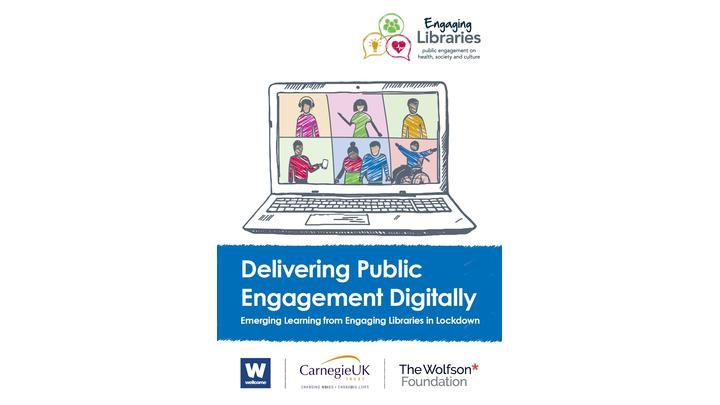Delivering public engagement digitally
Dec 17, 2020
by Rachel Heydecker, Carnegie UK Trust
As 2020 draws to a close, we find ourselves reflecting on an extraordinary year. One thing we are keen to do at the Carnegie UK Trust is to share our learnings and findings; talking to others about how they have been working during the pandemic, what they are doing and what they are finding. It was in this vein that we published Delivering Public Engagement Digitally – Emerging Learning from Engaging Libraries in Lockdown.
The second phase of the Engaging Libraries programme began in November 2019, with a cohort of 16 library services. With progress impacted by the Coronavirus pandemic and various lockdowns closing library buildings and focussing energies on readjusting to online activities, the participants took time to rethink their original proposals.
However, two of the Engaging Libraries projects adapted during the first national lockdown and delivered digital engagement activities at that time and more recently. We were keen to share more about these digital activities, what they tell us about digital forms of public engagement and the learning gleaned from them.
In focusing on two projects that were delivered digitally, we are not suggesting that this is the only way in which public library services could, or should, seek to engage members of the public. We, like the staff who responded to our Making a Difference survey earlier this year, are mindful of the need to reach and include the digitally excluded.

The projects
Redbridge, Newcastle and Kirklees Library Services worked together to help communities explore the themes of death and dying, whilst Falmouth Library ran AccessLabs, bringing researchers and citizens together to explore research about climate, environment and health.
Top tips on digital delivery
- Confident facilitation, preparation and moderation is key to hosting a smooth digital event. One project offered a ‘test run’ in advance for anyone uncertain about using the technology, which they will proactively advertise in the future. The other project had instructions ready to share with anyone who was uncertain about accessing or using Zoom.
- Project staff developed and used detailed checklists for each online event to make sure everyone is clear on their roles. Having a ‘producer’ who can work behind the scenes to monitor the waiting room, chat function and general troubleshooting is the key to the facilitator being able to concentrate.
- Creating an atmosphere where participants could discuss the topics with each other (before, during and after) was important to help to create the right kind of atmosphere and foster dialogue and engagement. The projects did this through using breakout rooms and the chat box on Zoom, as well as creating a dedicated online space (on Facebook) to continue discussions after events.
- Explore digital alternatives to things you would normally do in person, for example using online whiteboards instead of post-its and flipcharts.
- Things take just the same amount of time (or longer) in the digital space. Don’t assume people won’t want to talk. In our experience, participants have wanted to proactively have a social space.
You can read more about the emerging learning from our Engaging Libraries projects here and we look forward to continuing to share the programme’s journey in 2021.
Read more from Carnegie UK Trust:
Making a Difference, a research report on the impact libraries had on their communities during lockdown.
12 steps to eliminate digital exclusion - learning from lockdown
